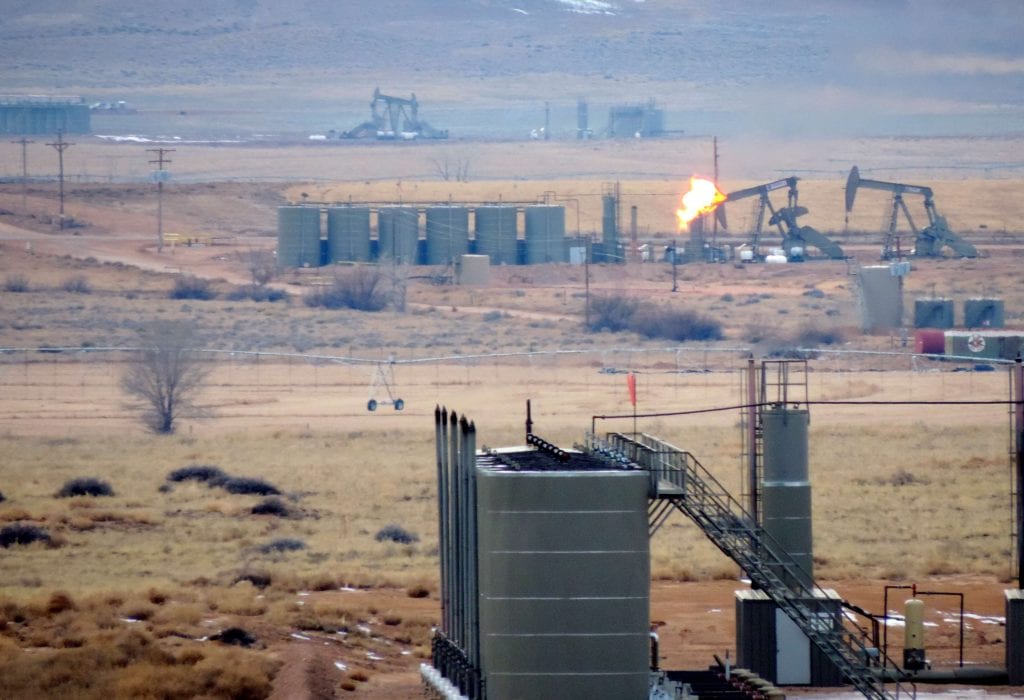UPDATE/VICTORY! EOG Resources has canceled the Greater Chapita Natural Gas project because it is no longer economical. The original project would have allowed 7000+ wells and the most recent iteration proposed 2800+. Now, in a win for Utah’s air quality, no new wells will be drilled at this time. As Guardians noted in our comments, the project would have violated federal air quality standards.
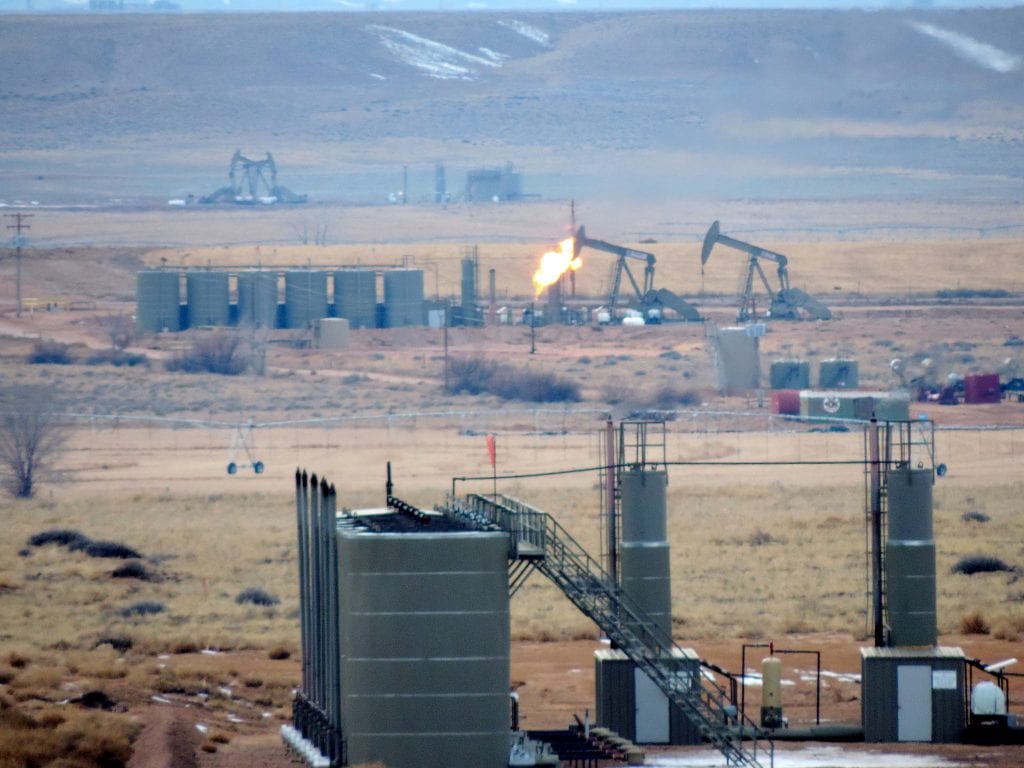
Flaring in the Uinta Basin. Check out our Flickr album detailing the devastating impacts of fracking at the foot of the Uinta Mountains in southeast Utah.
Yesterday, Guardians moved to stop 2,808 new oil and gas wells from worsening the air quality in the Uinta Basin in northeastern Utah.
Guardians’ push back came in the form of extensive comments lambasting the U.S. Bureau of Land Management’s proposal to rubber stamp the new wells through the Greater Chapita Wells Natural Gas Infill Project.
The natural gas fracking project would expand EOG Resources (FYI, EOG is the descendant of Enron, so you get a sense of the company’s ancestry). EOG has already turned pubic lands in the eastern Uinta Basin into a complete oil and gas sacrifice zone.
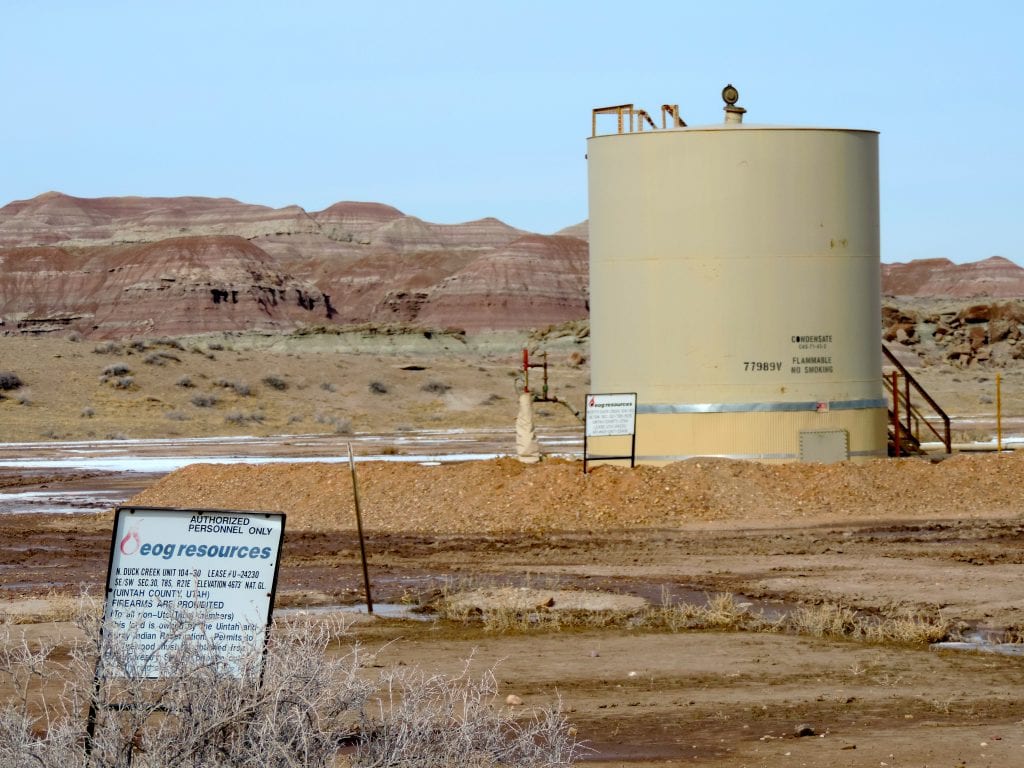
The proposal comes just as the Environmental Protection Agency has designated the Uinta Basin, where the wells are proposed, as in violation with federal air quality standards. The area is in marginal nonattainment with federal ozone standards.
Ozone is the key ingredient in smog, and can inflame people’s airways, cause difficulty breathing, increase the frequency of asthma attacks, and cause long-term lung damage, especially in children, the elderly, asthmatics, and people who work outside.
The state of Utah has found that oil and gas emissions are the main cause of winter-time ozone problems in the Uinta Basin.
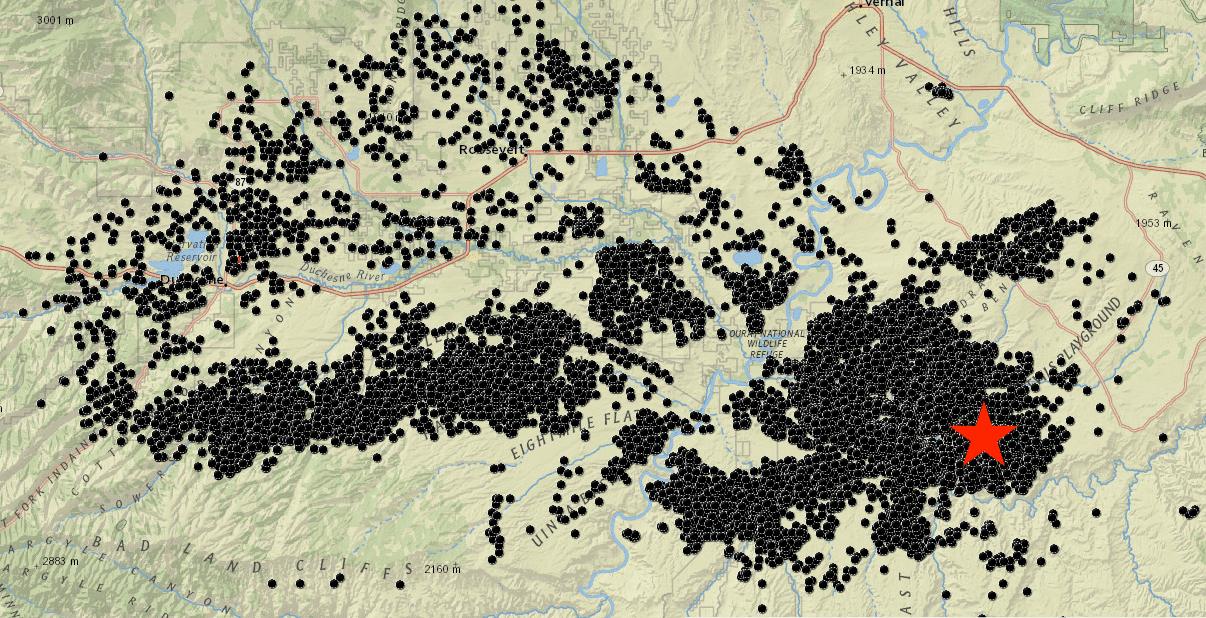
Producing oil and gas wells cover the landscape of the Uinta Basin. The location of the Greater Chapita Project is denoted by the red star.
The EPA’s decision to formally designate the Uinta Basin comes as no surprise. The Basin’s air quality has been exceeding federal standards for years.
Currently the primary standard for ozone is exceeded if the three-year average of the fourth highest reading is at or exceeds 0.070 parts per billion. As shown by the chart below, all but one of the monitoring stations in the Uinta Basin are violating this provision.
And, these exceedences are occurring before accounting for any of the wells proposed in the Greater Chapita Project.
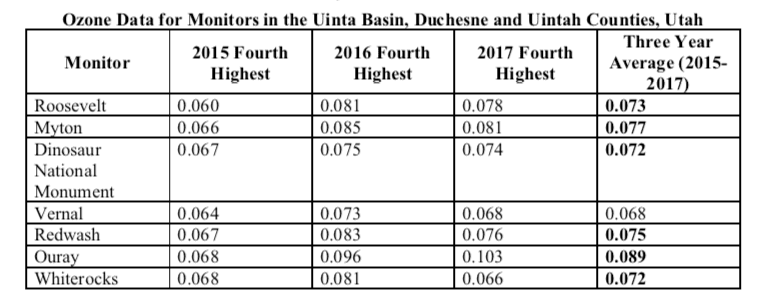
Data obtained from the Utah Department of Environmental Quality, Air Quality Division. Click to access.
You might think that Bureau of Land Management would either say no to the project or take steps to ensure that federal air quality is protected. Sadly, they’re doing neither.
Unfortunately the Bureau of Land Management is intent on greasing the skids for more fracking on public lands despite the impacts. Indeed, the agency admits in its environmental analysis for the project that allowing the new wells will result in the violations of federal air quality standards.
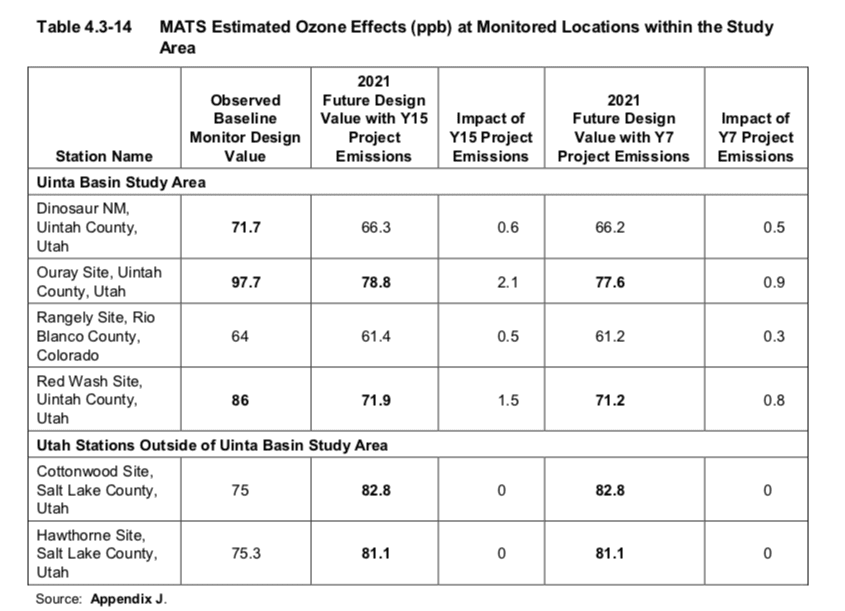
A chart detailing air quality exceedences from the Greater Chapita Project Draft Environmental Impact Statement (DEIS). The DEIS is available online here.
That’s why Guardians is stepping up to stop this short-sighted project and protect Utah’s air quality. These lands are our public lands, and we have a right to enjoy them without inhaling hazardous air.
And the stakes go beyond clean air. The Uinta Basin sustains a vital portion of the Green River, the Ouray National Wildlife Refuge, Dinosaur National Monument, and other vital public lands.
So, stay tuned as we take on and prepare to thwart yet another project poised to destroy public lands in the American West.
